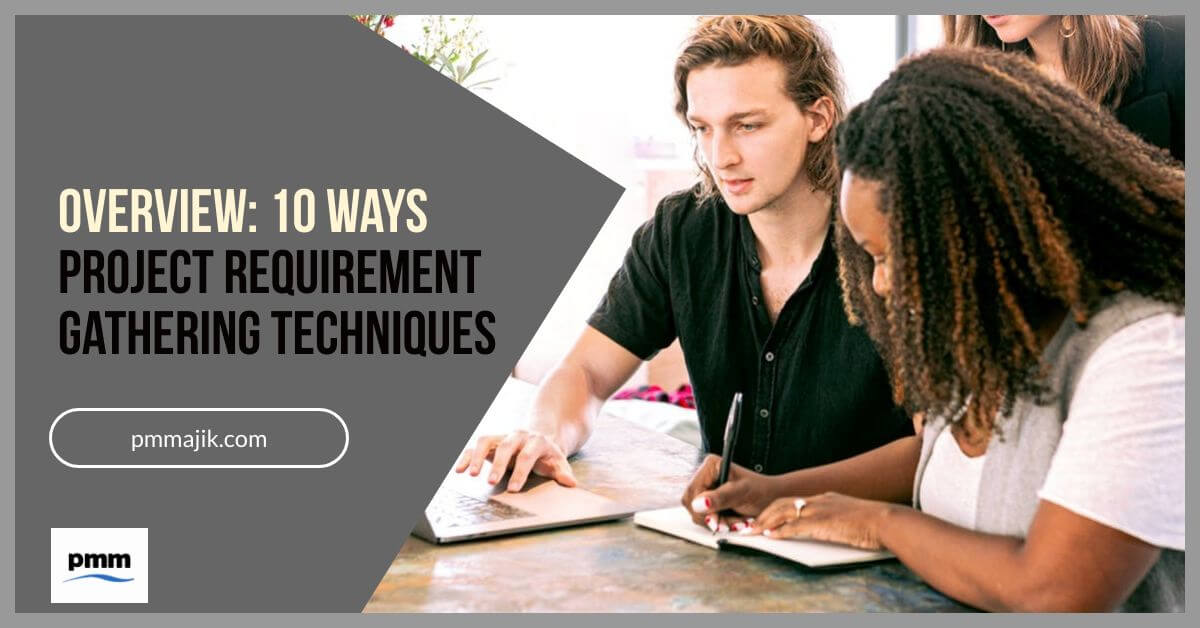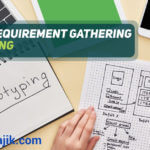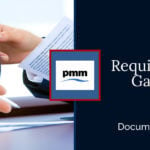When meeting with stakeholders to discuss a project, it’s deliverables and overall result, it is essential to gather the most accurate information to ensure project success.
Each project may require a mixture of techniques to gather the information needed. The techniques used will depend upon what suits the project best.
Below we explore some of the different Project Requirement Gathering Techniques that can be used to gather requirements.
Brainstorming
Brainstorming amongst a group of individuals is used to gather as many ideas, solutions and opportunities as possible.
The brainstorming environment encourages participants to be free-thinking and open and provides quirky ideas that may not be welcomed in more formal situations.
More details visit Project Requirment Gathering – Brainstorming.
Workshops
More structured than brainstorming, workshops allow collaboration to document the requirements of stakeholders.
Here documents are drawn up, which may include static and activity diagrams.
More details visit Requirement Gathering Workshops.
Interviews
Conducting interviews with stakeholders is perhaps the most common technique. To undertake and complete a successful project, it is essential that the expectations and goals of stakeholders is understood fully.
There are a number of things to remember when conducting interviews:
- Consider the individuals perspective, what one stakeholder may view as important, another stakeholder may not.
- Ask open ended, probing questions and ask the stakeholder to elaborate on any area which needs clarification.
- Listen. This might sound obvious, but it is very easy to ask questions without fully listening to the answer.
More details visit Requirement Gathering Questions.
Survey/Questionnaire
Whilst interviews are undoubtedly valuable, they can be time-consuming and costly, particularly when a large number of stakeholders are engaged.
In this instance a survey or questionnaire can be used, however getting it right, and avoiding bias can be an artform. Questions can vary from Likert scales, where respondents are asked to rank statements from strongly agree to strongly disagree, checkboxes and open and closed questions.
More details visit Project Requirement Gathering: Surveys and Questionnaires.
Document Analysis
For projects that are based upon an existing product or system, document analysis is a useful tool to identify where gaps exist and what drove its current incarnation.
Reviewing current documents may provide key pieces of information that have been forgotten about and provides a basis of information for the new product or system.
In other words, don’t reinvent the wheel!
For more details visit Project Requirement Gathering: Document Analysis.
Reverse Engineering
Sometimes sufficient documentation of an existing system may not exist or be difficult to access.
In this instance, reverse engineering may be employed to identify what a product or system does. Unfortunately, this does not identify what it should do, or identify any errors.
For more details visit Project Requirement Gathering: Reverse Engineering.
Focus Groups
Gathering groups of end users can be a really valuable way of gaining information that will drive the project’s success.
The group should be representative of the end user and can be used in two ways. Firstly, to volunteer information about their needs, wants and problems, and secondly, to review, validate and refine work completed so far.
Focus groups however shouldn’t be confused with brainstorming. This is a managed process which is part of market research and uses specifically selected participants.
For more details visit Project Gathering Requirements: Focus Groups.
Interface Analysis
This type of analysis is typically used in a software design environment and involves reviewing software to ensure that it interacts appropriately with other systems and is useable and attractive to the end user.
For more details visit Project Requirement Gathering: Interface Analysis.
Prototyping
A relatively modern way to gain feedback on a product or service is to create a prototype, based on the preliminary requirements that have been identified as a solution.
This gives the client a visual and practical idea of how the product or service is progressing, and what it may look like at completion, whilst allowing the opportunity for improvements prior to final production.
Prototyping can be a repetitive process and continues until the client is happy that the product or service successfully meets the needs of their users, or for an agreed number of iterations.
For more details visit Project Requirement Gathering: Prototyping.
Observation.
Observing how the product or service is actually used can prove to be an extremely valuable technique to get feedback on a prototype or process.
There are two types of observation, passive and active. Passive involves simply watching how something is used and is more effective when used with a prototype. Active involves watching how something is used whilst asking questions and is most effective in understanding a process.
For more details visit Project Requirement Gathering: Observations.
Summary
There is no right or wrong way to project requirement gathering.
Being aware of the options will allow you to mix and match the best approach (which can use more than one technique) to suit the task and how you like to work.






